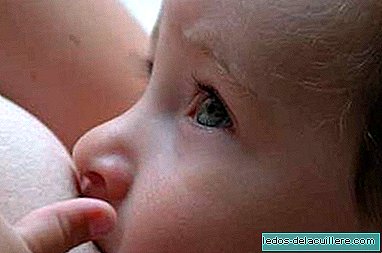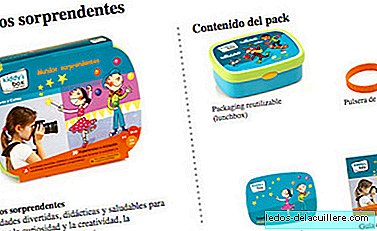
We continue reviewing some of the theories about the acquisition and development of language in the baby more important. It has already been the turn of two of them: behaviorism and innatism; now we will delve into the Cognitive Theory, represented by Jean Piaget, Swiss psychologist.
Cognitive Theory, regarding the origin of language, can be considered an addition to the innatist vision, since it shares with it the bases related to the child's individuality or a general conception of language as a capacity for representation.
However, we find the difference between the two theories, almost exclusively, in which the Cognitive Theory defends that the origin of language is intimately linked with cognitive development, so that the child will learn to speak only when he cognitively accesses a certain level of that cognitive development.
In other words: our child will learn to speak when he is cognitively prepared for it. The innatistas, on the contrary, wanted to demonstrate the existence of an independence of the language against other cognitive aspects.
According to this theory language acquisition depends on the development of intelligence, that is, intelligence is needed to be able to acquire a language. This theory seeks to reflect how our cognitive capacity develops from the first years of life until intellectual maturity.
Intelligence begins to develop from birth, long before the child speaks, so he will learn to speak as his cognitive development evolves and reaches the level necessary for it.
It is the thought that makes it possible to acquire a language, which implies that when the human being is born he does not possess an innate language (as the Innatist Theory affirmed), but that he is gradually acquiring it as part of cognitive development. Likewise, once the language is acquired, it will help the child to develop cognitively.
Language acquisition process
In the process of language acquisition, this theory establishes two types of speech:
- Self-centered speech: which corresponds to the type of speech that the child uses to express his thoughts at this stage, rather than to communicate socially. This language is reduced until it disappears after approximately seven years. (For example, when our son is playing with the fittings and says out loud “the circle goes here.” He is not telling us, but his thoughts are expressing them aloud.)
- Social speech: it is the one that develops after the egocentric (in the case of the fittings, when he wants to communicate to us, that we are seeing him, where he has to place the figurine).
- The accuracy with which Piaget's observations have been carried out.
- By studying with his own children, Piaget was able to discover phenomena that could have gone unnoticed if someone not known to the children had done them.
- Another advantage of having carried out his investigations with his children is that he was able to decide whether the failure of the tasks presented was due to lack of interest, fatigue or real disability.
- The studies were carried out over a long period of time, something that is very rare to do when conducting an investigation.
- By basing its conclusions on only three children, it is very difficult to generalize to all children the results obtained.
- Piaget and his wife were researchers but, above all, they were parents. And we must not forget that, on certain occasions, parents are not entirely objective in the performance of their own children.
The progressive construction of different "schemes" on reality is a sign that the child's intelligence is developing. Since the children are born, they build and accumulate these “schemes” that arise from the exploration of the environment in which they live, adapting them when facing experiences hitherto unknown to them.
Another idea of Cognitive Theory is that learning begins with the first sensorimotor experiences, formed with cognitive development and language, where learning continues through knowledge by interacting with the surrounding environment.
Thus, to reach the maximum mental development, our child should go through his birth from different and progressive stages of cognitive development, which he cannot skip, nor can we force him to achieve them more quickly.
Stages of child development
Piaget's theory identifies four stages in the child's development, which are: motor-sensory stage (from birth to two years), preoperational stage (from two to seven years), concrete-operational stage (from seven to twelve years) and the formal-operational stage (from twelve to adolescence).
I am not going to stop to explain these stages since my partner Mireia has already talked about the subject more widely. You can check their entries in the links that accompany this post, at the end of it.
Advantages and disadvantages
Cognitive Theory has its advantages and disadvantages, like the rest of theories. In this one in particular, the disadvantages are conditioned with the advantages, which are, among others:
On the other hand, some of the disadvantages of this theory are:
Conclusion
The Cognitive Theory It completes the information provided by the innatist theory in the sense that they demonstrate that, together with linguistic competence, cognitive competence is also necessary to acquire and develop language.
It should also be noted that the cognitive vision of language, and the relationship between language and thought, was also pointed out by the Russian psychologist Lev Vigotsky, although he understands it in the opposite way as Piaget does.
However, Vigotsky's approach is more related to the Interactionist Theory, which we will talk about in the last of the theories about the acquisition and development of language in the baby.












